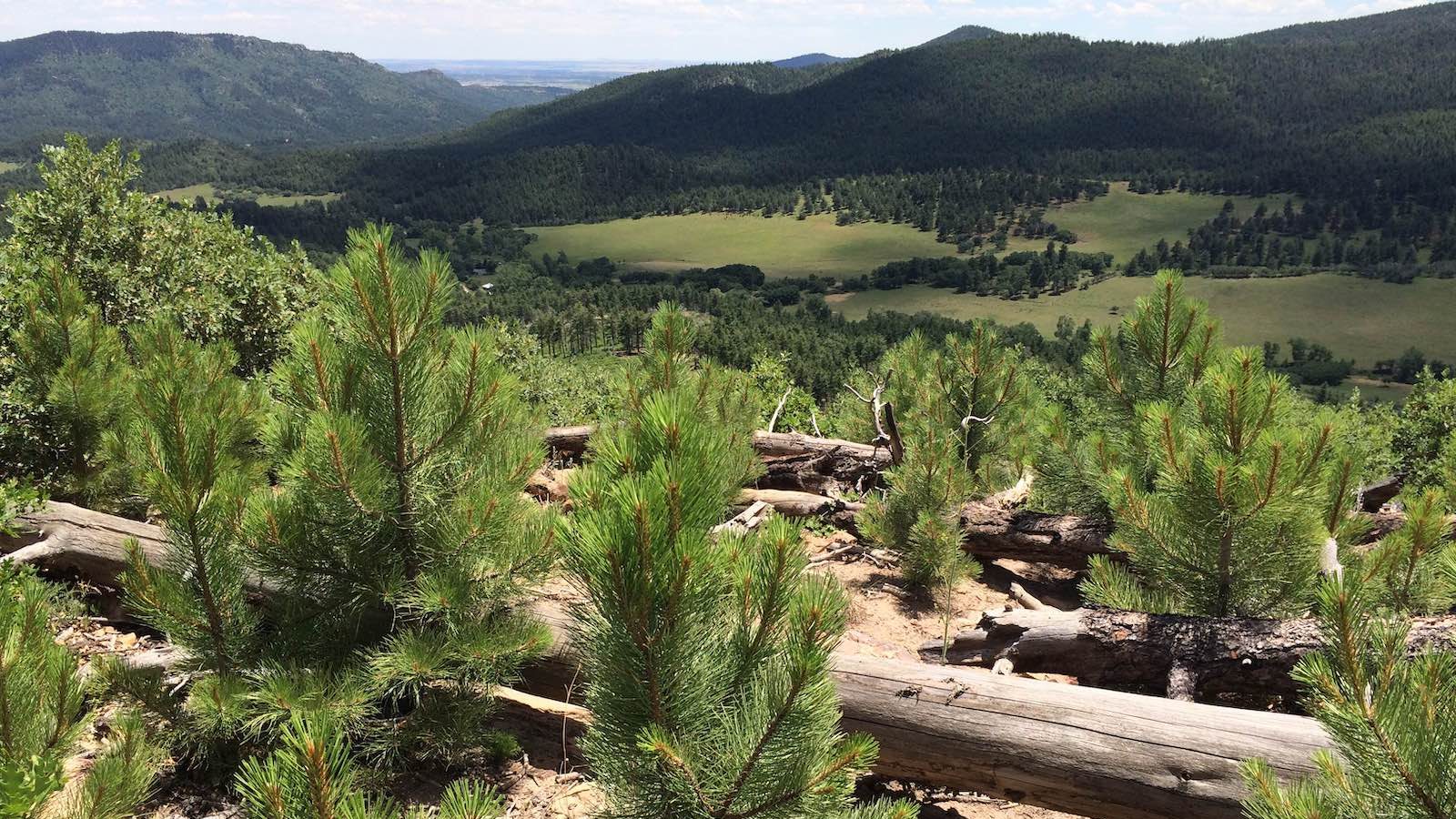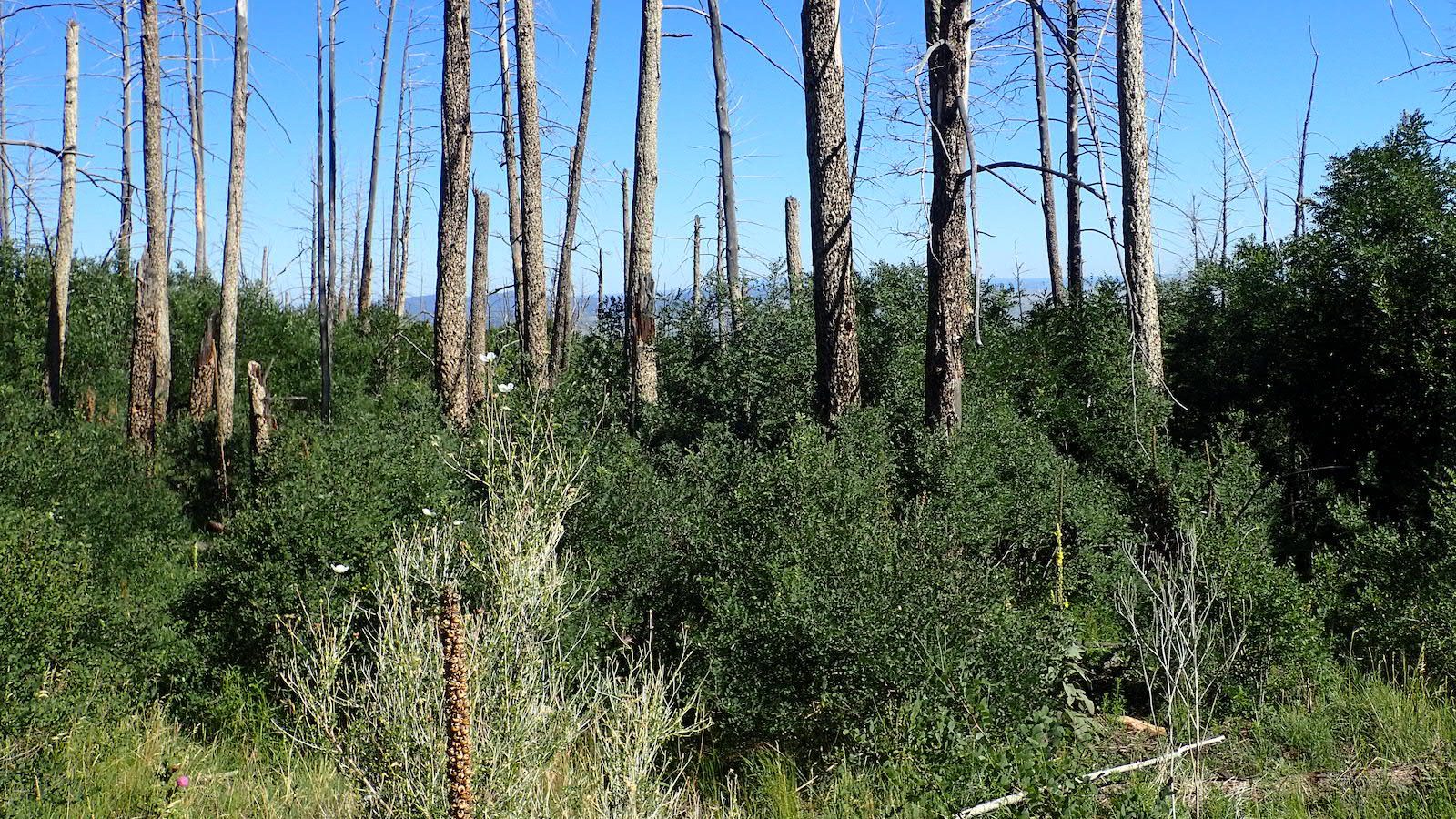Environment & Energy
Related: About this forum20 Years After Colorado Fire, Scientists Face The Fact That Pine & Fir Trees Will Not Return
EDIT
Kimberley Davis is a plant ecologist at the University of Montana and the lead author of an influential study on how climate change is altering forest regeneration after fire, published in the Proceedings of the National Academy of Sciences. In her research, she found site after site where new climatic conditions no longer supported the growth of young pines. Adult trees can survive in conditions that kill their seedlings, but they have no future: Like the humans in the science-fiction movie “Children of Men” they’ve outlived their ability to reproduce. With no seedlings, when a fire eventually passes through that is strong enough to wipe out mature trees, it means the woods are gone for good.
When trees fail to regenerate after a fire, new plants take their place. To generalize, in the northern Rocky Mountains, it’s a mix of grasses and shrubs of the genus ceanothus — like snowbrush. In parts of the Southwest, juniper and oak savannas replace pine forests. In New Mexico, thorny locusts often dominate. In northern California, its dense hip to head-high thickets of manzanita and ceanothus. The general trend: fewer forests, more shrublands.
Examples of this ecological shift abound. Twenty years have passed since the Valley Complex Fire burned down the mature forests in Bitterroot National Forest in Montana, and yet there are no signs of young trees returning to the big swaths of landscape. Sixteen years after the Peppin Fire in Lincoln National Forest in New Mexico, it appears the pines are gone for good in many places, replaced by scrubby Gambrel oaks that can survive in the hotter conditions. After the 2007 Moonlight Fire in Plumas National Forest, dense stands of chaparral whitethorn and greenleaf manzanita grew back, rather than trees. “It’s already happening, it’s not just something we are modeling in the future,” Davis said. “We are definitely at a point where we are all noticing significant impacts of climate change in terms of lack of forest regeneration across the West.”
 ?w=1536
?w=1536
Seedlings in the area burned in the 2005 Mason Fire in the Sangre de Cristo Mountains near Pueblo, Colorado. This is what forest regrowth looks like in areas where the climate has not made conditions too hot or dry for conifers. Photo taken in 2016 by Kyle Rodeman.
One study, published last year, found that if forested areas in the Rocky Mountains burned, just half would recover well. It’s generally the south facing slopes and the fringes, where woods meet the plains, that can no longer nurture young pine and fir trees, because those are the parts of forests with the highest temperatures, said Kyle Rodeman, the lead author of that paper, and a scientist studying forest recovery at Northern Arizona University. Southern slopes get more sun in the northern hemisphere, which makes them hotter and drier. And the low-elevation edges of forests mark the line where conditions become inhospitable for trees — with smaller plants in the hotter lowlands, and trees appearing at higher, cooler elevations. It only makes sense that these spots have been the first places forced over the tipping point, into conditions unsuitable for forests, as climate change has turned up the heat. As the years pass, those unsuitable conditions for forest creep uphill.
 ?w=1536
?w=1536
The forest on New Mexico’s El Capitan mountain, between the Pecos and Rio Grande rivers, in the 2004 Peppin Fire, has become a brushy biome, dominated by thorny locusts and Gambel oak.
EDIT
https://grist.org/climate/climate-change-forest-loss/